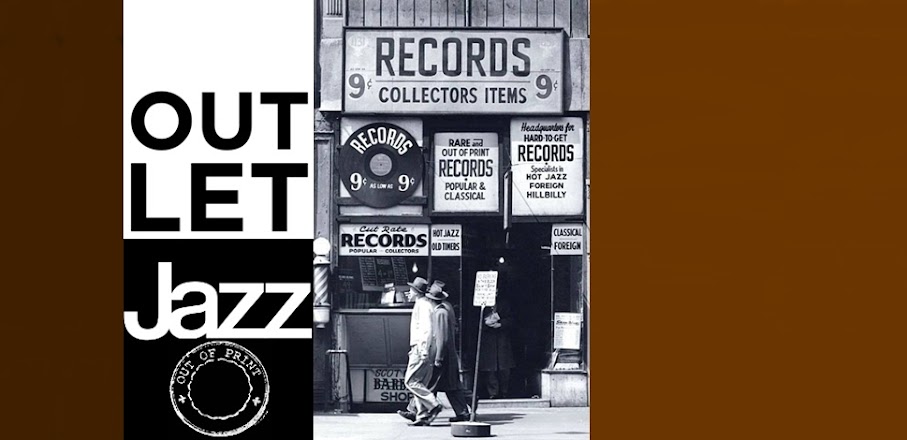For much of Coleman Hawkins' post-1940 career, the tenor saxophonist fronted quartets, quintets and other small groups. When he did play with full-size orchestras, Hawk was typically the featured soloist, not a sit-down, chart-reading member of the reed section. So unfortunately you don't often get to hear how the flavor of a superb reed section might change with Hawk's mighty tenor as part of the mix.
Hawk also didn't play much with Count Basie's band. Which makes perfect sense, since Hawk and Lester Young, Basie's star tenor saxophonist, were intense rivals. Hawk recorded with Basie on only a few occasions — in January 1941 as poll-winning members of the Metronome All Stars; with Basie's big band in April 1941 (Young was fronting his own band and working with Billie Holiday at the time); and in December 1957 for CBS' The Sound of Jazz, the noir TV jam session.
Long curious to know how Hawk's confident, cutting tone would sound within Basie's bluesy sax section, Savoy Records' producer Ozzie Cadena proposed a recording summit in early 1958. Hawk agreed, and Basie gave his blessing. So on April 24, right after Basie's band returned from a Canadian tour and just before Hawk left for Europe with Jazz at the Philharmonic, nine musicians converged on Rudy Van Gelder's recording studio in New Jersey. Cadena oversaw the session for World Wide Records.
For the date, Marshall Royal and Frank Wess were on alto saxes; Frank Foster and Hawk were on tenors; and Charlie Fowlkes was on baritone sax. The only reed player missing was Billy Mitchell, who had just joined Basie months earlier on tenor and was the sax player dropped to make room for Hawk. The rhythm section featured guitarist Freddie Green and bassist Eddie Jones, both Basie-ites, and Bobby Donaldson on drums and Nat Pierce on piano.
To ensure that the session went off without a scoring hitch, Cadena turned to rock-solid Billy Ver Planck for the swinging arrangements. Ver Planck, a trombonist, had written for the Jimmy Dorsey and Claude Thornhill bands, and in 1958 was recording for Savoy.
The result was Coleman Hawkins Meets the Saxophone Section, which was first released on World Wide to show off the label's newfound stereo capability. Recorded only in stereo (rather than mono and stereo), many jazz listeners passed on the LP, since the more expensive stereo format was relatively new technology and most people had only mono equipment. Ultimately, the recording also was released on Savoy as Coleman Hawkins Meets the Big Sax Section.
The five tracks recorded that day included three blues and two show tunes —"I've Grown Accustomed to Her Face" and "There Is Nothing Like a Dame". The first track on the album, "Ooga Dooga", is particularly fascinating given that Hawk does not solo. Instead, you get to hear how the section sounds with Hawk as one of two tenors reading down Ver Planck's charts. The standards also are stunning swingers, with Hawk tearing in and out of Frederick Lowe's loping Face and Richard Rodgers' charging "Dame".
For my money, Coleman Hawkins Meets the Saxophone Section may be one of the best and most robust reed-themed albums ever recorded. Every track lives up to the album's title, and you get everything you expect, from the sauciest blues to street-smart standards. There isn't a bad note on the album. It's just a shame that another five tracks weren't captured that day. *Marc Myers*
This studio session for Savoy finds the great Hawkins playing as part of a five-piece sax section. Actually the other saxophonists and part of the rhythm section were taken from the Count Basie Orchestra and outfitted with arrangements by Billy Ver Planck. They play a variety of little-known but swinging material; the logical charts and high-quality solos make this LP well worth acquiring. *Scott Yanow*
A thoroughly swinging and wonderfully arranged session. There is the essence of swinging the blues all through the set. The Basie sax and rhythm section (with Nat Pierce siting in for Basie) are absolutely wonderful! A must have performance! *David M. Robinson*
1 - Ooga Dooga
(Coleman Hawkins)
2 - I've Grown Accustomed To Your Face
(Frederick Loewe, Alan Jay Lerner)
3 - Thanks For The Misery (master take)
(Billy Ver Planck)
4 - An Evening At Papa Joe's
(Frank Foster)
5 - There Is Nothin' Like A Dame
(Richard Rodgers, Oscar Hammerstein II)
6 - Thanks For The Misery
(Billy Ver Planck)
Coleman Hawkins, Frank Foster (tenor saxes); Frank Wess, Marshall Royal (alto saxes); Charlie Fowlkes (baritone sax); Nat Pierce (piano); Freddie Greene (guitar); Eddie Jones (bass); Bobby Donaldson (drums).
Recorded at Van Gelder Studio, Hackensack, New Jersey, April 24, 1958.


https://1fichier.com/?szt4tb9nqrkubzrbnuhv
ReplyDeleteThank you so much!
ReplyDeleteMuy bueno, gracias,
ReplyDelete